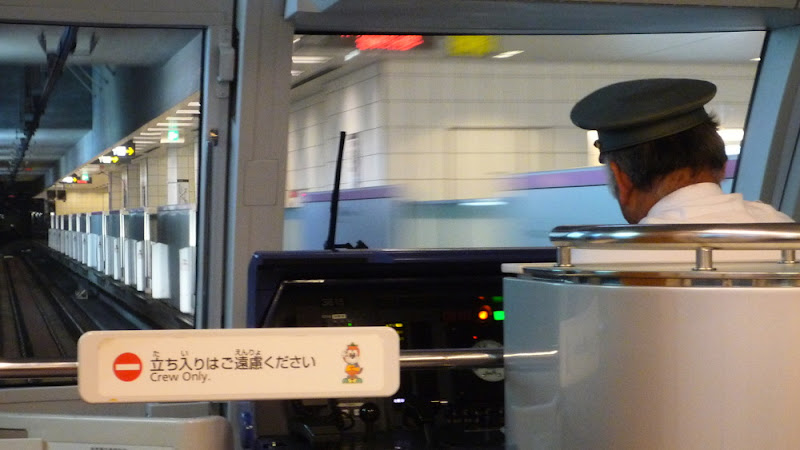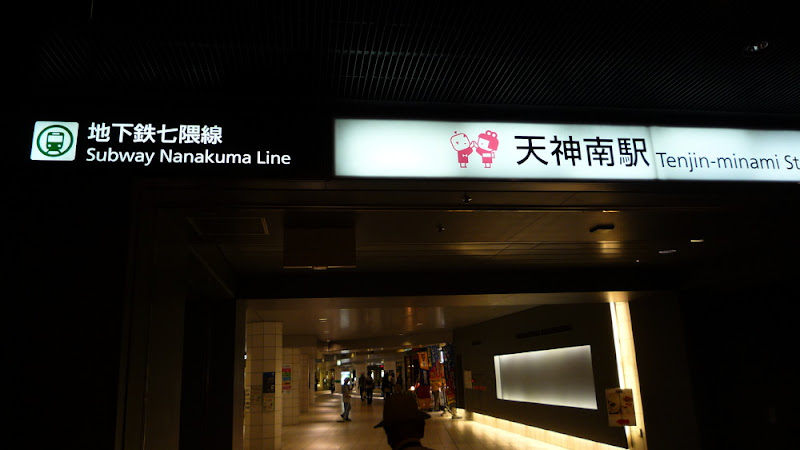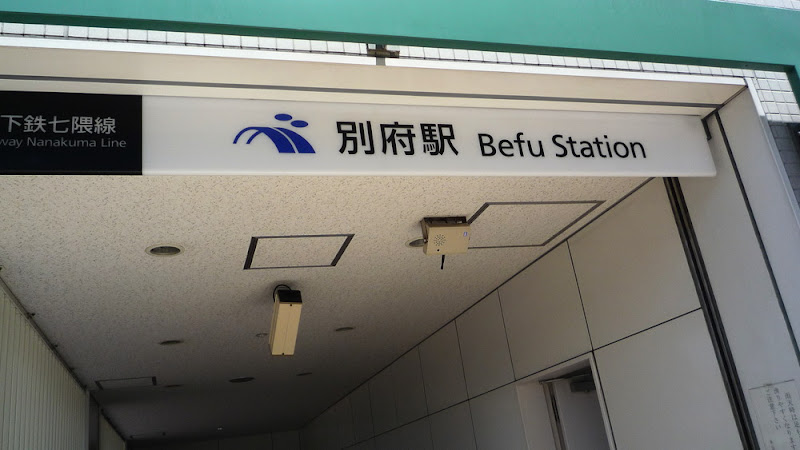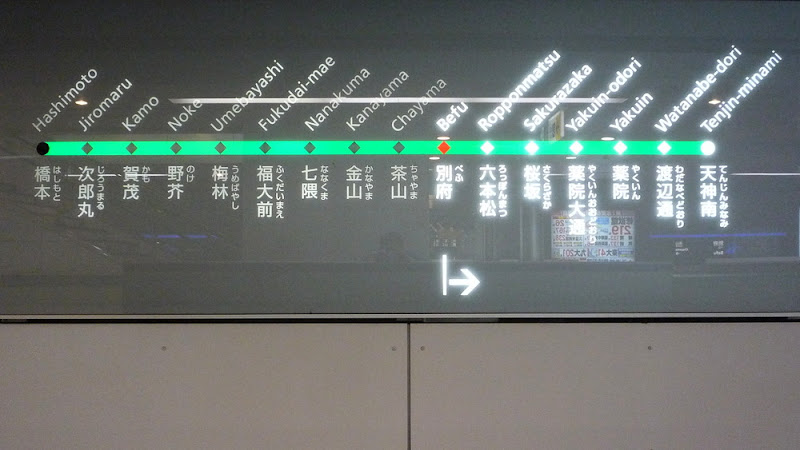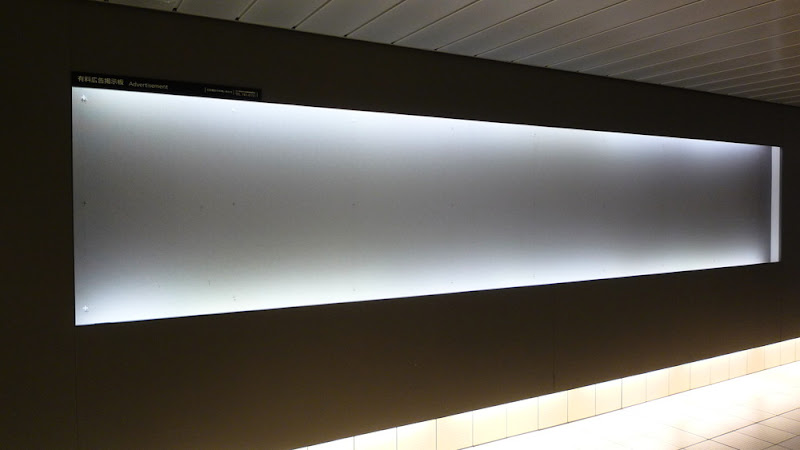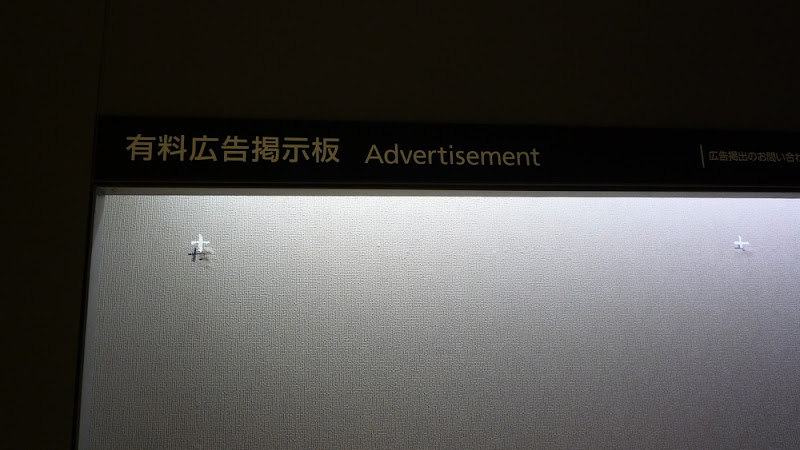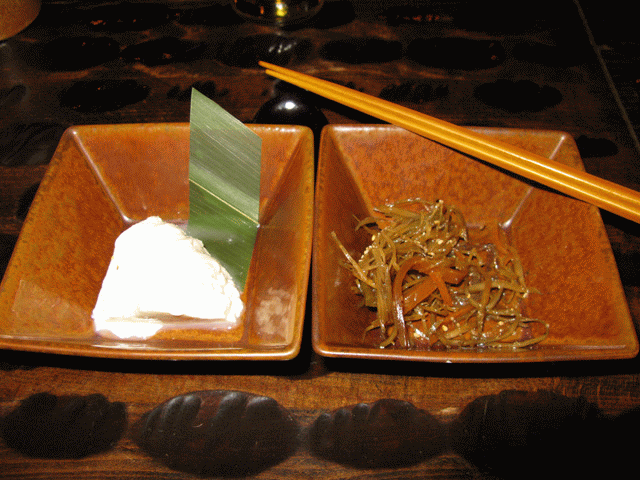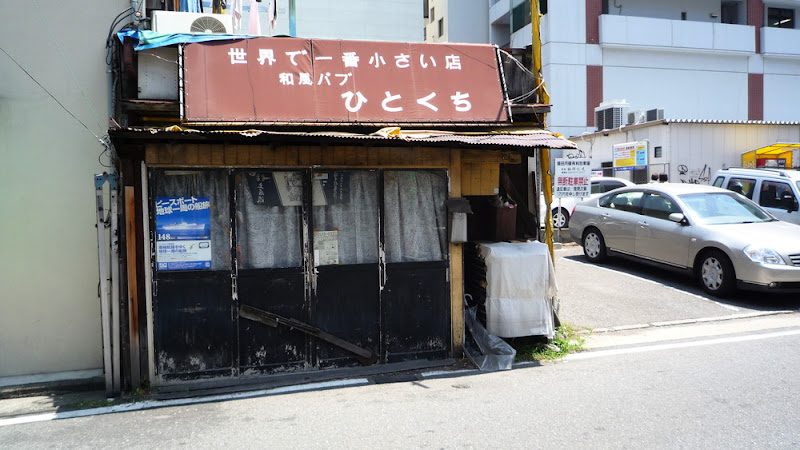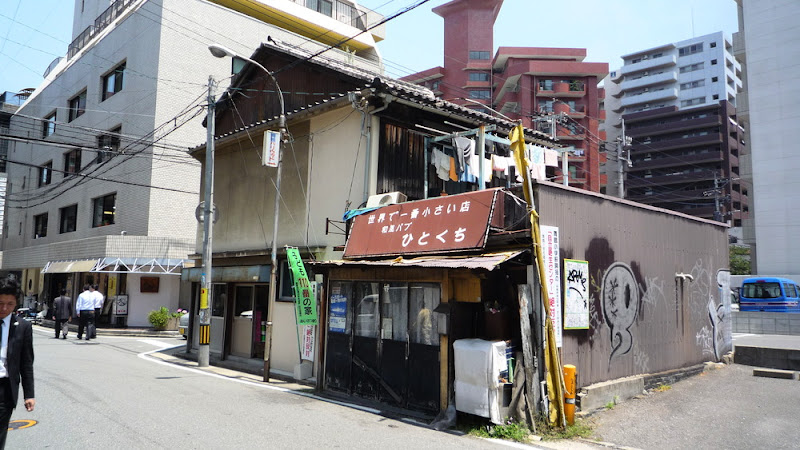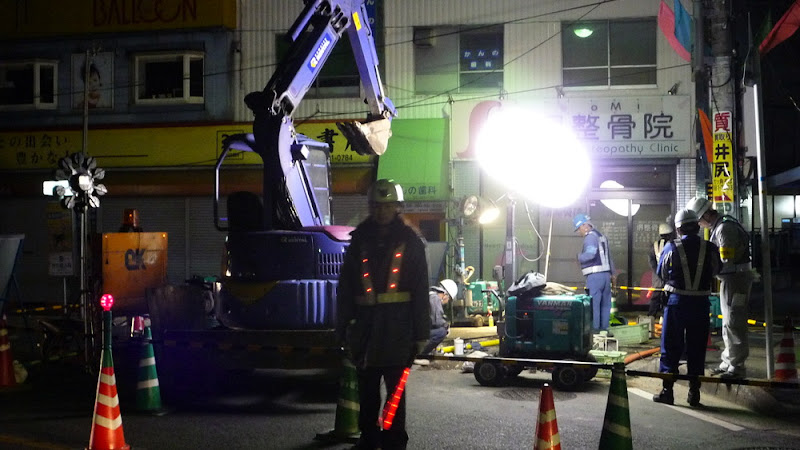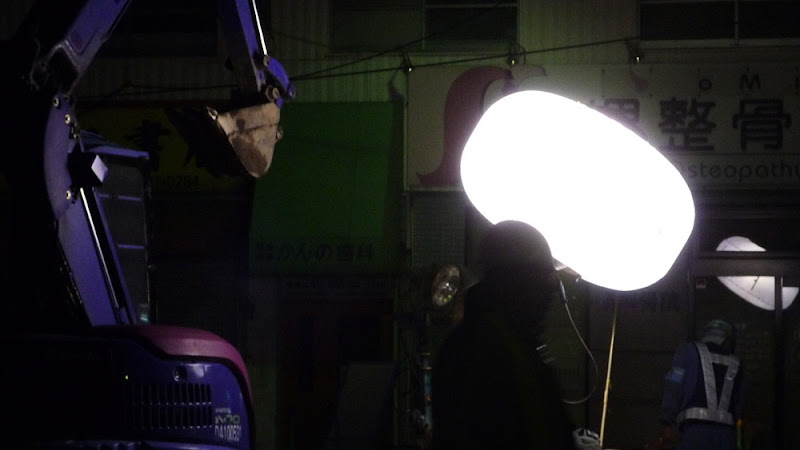Fukuoka es una ciudad extensa de casi un millón y medio de habitantes (incluyendo más de 18.000 extranjeros) pero solo tiene alrededor de 7 líneas de tren o metro que sean convenientes para el transporte por dentro de la ciudad. Aunque muchas veces no es necesario, me da la impresión de que la gente usa demasiado el coche.
福岡は150万人弱の人口(外国人1万8千人以上を含めて)の都会なのに、電車と地下鉄を合わせても市内移動に便利な線は7本ぐらいかな。必要じゃないときも多いのに、人が車を使いすぎる気がする。
Fukuoka is a big city with almost 1.5 million residents (including over 18,000 foreign nationals) but adding up subway and trains it only has around 7 lines that are convenient for moving around the city. It’s often not necessary, but I feel people use the car too much.
Cada estación de metro tiene su dibujo. Tenjin Minami.
地下鉄の駅はみんな特別な絵が付いている。天神南駅。
Every subway station has its own simple illustration. Tenjin Minami.
Watanabe-dori.
渡辺通駅。
Befu (no confundir con Beppu, que es una ciudad de otra provincia pero se escribe con los mismos kanji «別府»).
別府駅(べふ)。大分県別府市(べっぷ)とは無関係。
Befu (not Beppu, a town in another prefecture whose name is written using the same «別府» kanji).
Las indicaciones de la línea Nanakuma son muy claras y modernas.
七隈線の案内は新しくて分かりやすい。
The info screens at the Nanakuma Line are very modern and easy to figure out.
¿Qué es esto? ¿Una pared grande en una estación, sin publicidad?
何これ?駅のこんな広い壁に広告がなくてもいいのか?
What’s this? A large wall at a station, without any advertisements?
Vale. Casualmente estaba vacío este espacio. Sin publicidad, me da la impresión de estar en otro país.
なるほど。たまたま空いていただけか。広告が見えないと違う国にいる感じがするな。
I see. It was just vacant right now. It doesn’t feel like in Japan when I can’t see no advertisements.

